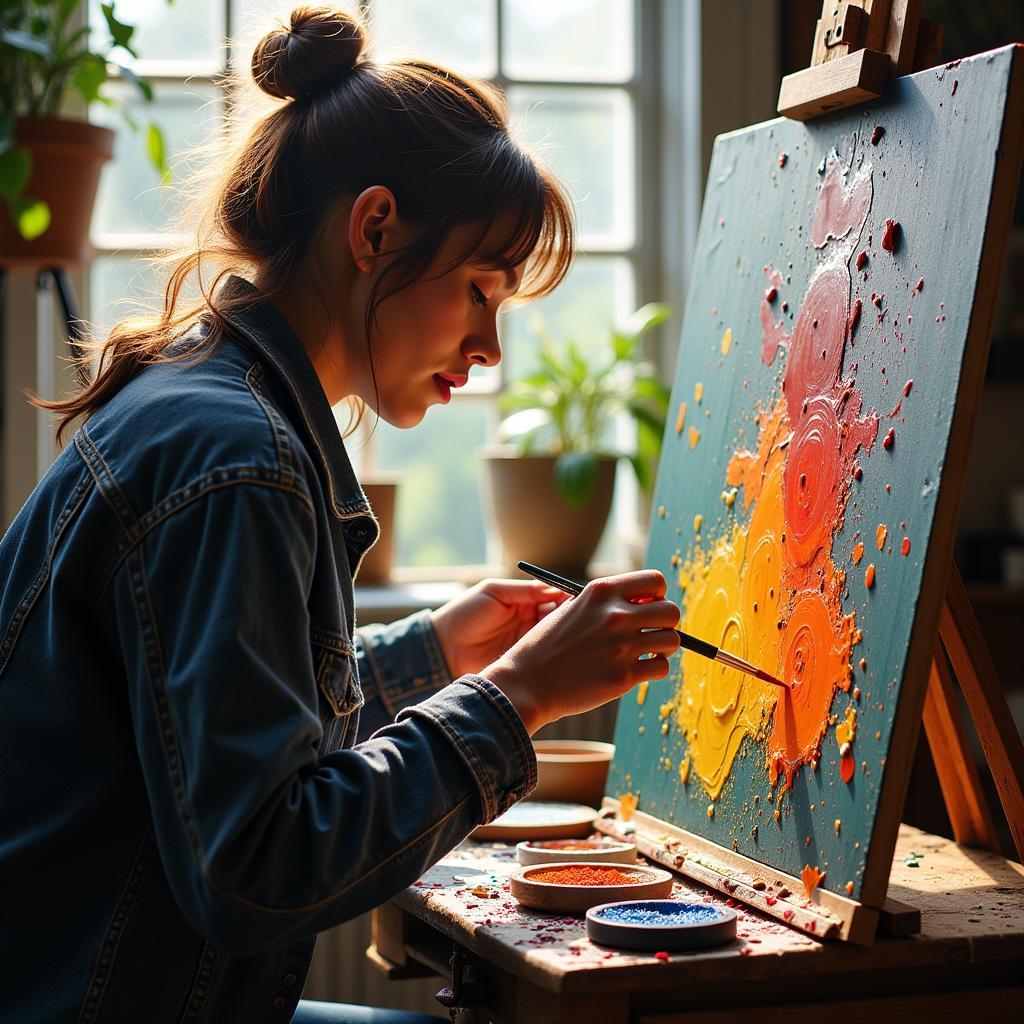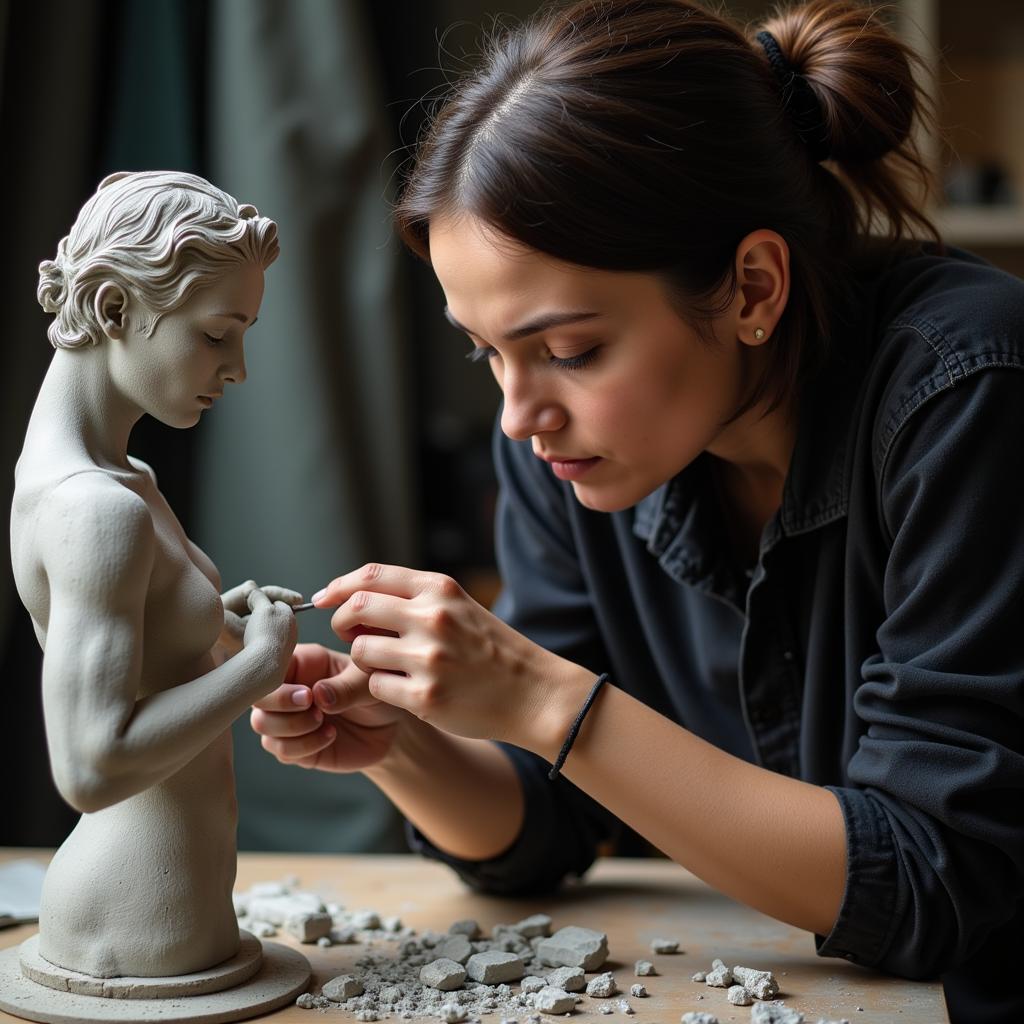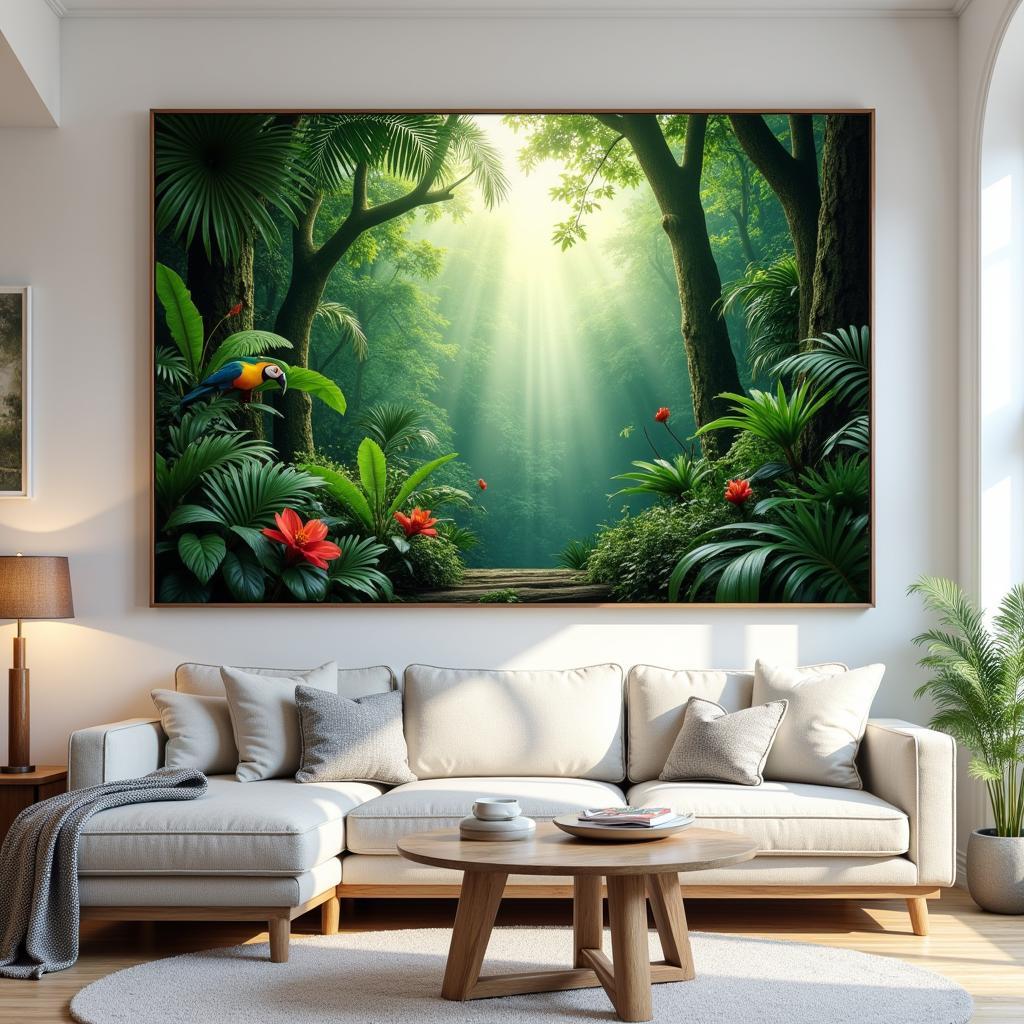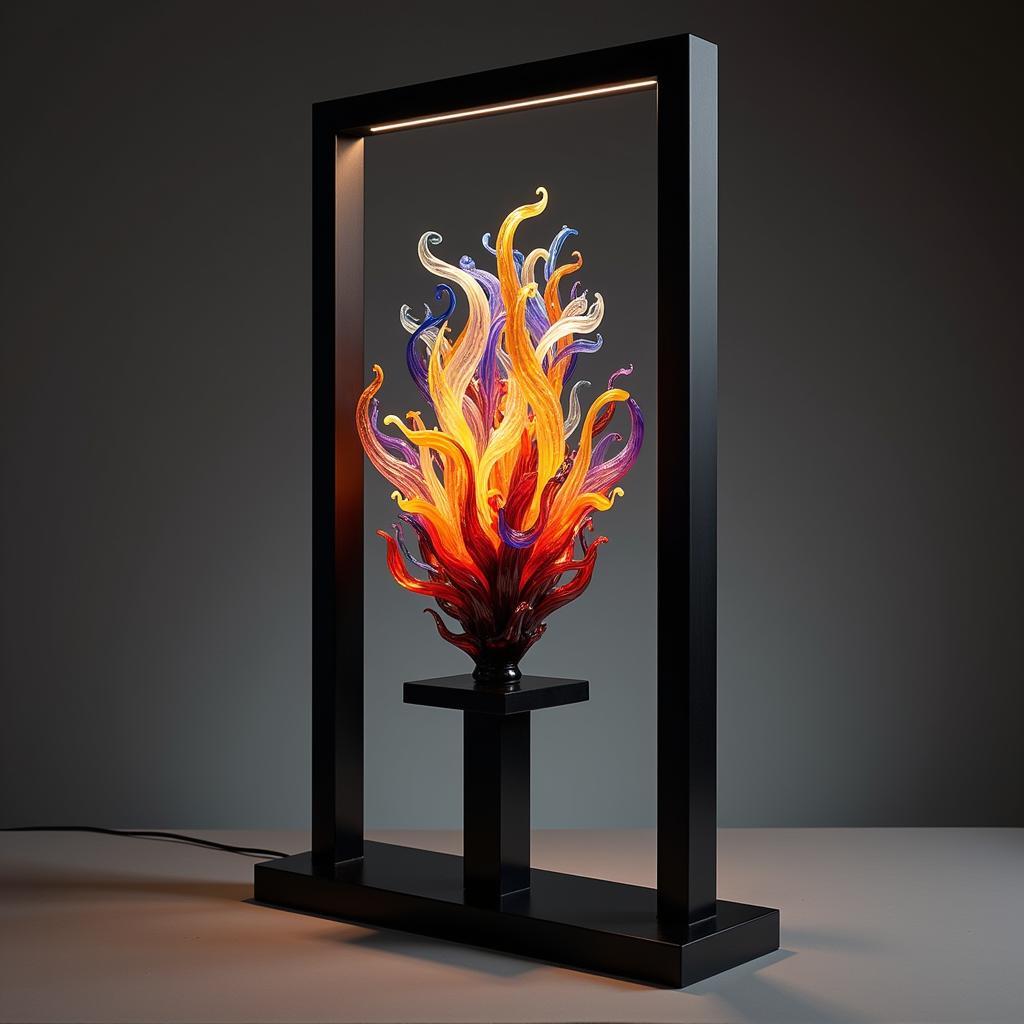Exploring Art Dissociation: A Journey into Creative Detachment
Art Dissociation is a fascinating intersection of psychology and creativity. It describes a mental state where artists detach from their surroundings and enter a flow state, allowing them to fully immerse themselves in their creative process. This state can be incredibly productive, leading to innovative and deeply personal artwork.
Understanding the Psychology Behind Art Dissociation
Art dissociation isn’t necessarily a bad thing. In fact, it’s often a crucial component of the artistic process. It’s a form of absorption, allowing artists to filter out distractions and focus intensely on their work. This focused state can be triggered by various factors, including repetitive actions, rhythmic movements, and deep concentration. Think of a painter lost in the strokes of their brush, a musician entranced by the melody they’re composing, or a writer completely absorbed in the world they’re building. They are, in a sense, dissociated from their immediate environment.
Is Art Dissociation the Same as Daydreaming?
While similar, art dissociation differs from simple daydreaming. Daydreaming is often passive, a wandering of the mind. Art dissociation, however, is an active state of deep engagement. It’s a focused, purposeful detachment that allows for a heightened sense of creativity and exploration. This distinction is crucial, as it separates the passive consumption of ideas from the active generation and refinement of them.
 Painter in a Flow State of Art Dissociation
Painter in a Flow State of Art Dissociation
The Benefits of Art Dissociation
This dissociative state offers several benefits for artists. It can enhance focus, boost creativity, and facilitate problem-solving. By detaching from external pressures and distractions, artists can tap into a deeper well of inspiration and produce work that is both authentic and innovative. This “flow state” allows for a seamless connection between the artist’s mind and their chosen medium, fostering a sense of effortless creation.
Enhancing Creativity Through Dissociation
Dissociation can unlock a unique perspective, allowing artists to see the world in new and exciting ways. This fresh perspective can lead to innovative artistic expressions, pushing the boundaries of conventional art and offering viewers a glimpse into the artist’s unique inner world. It’s a journey of self-discovery, a process of unearthing hidden talents and exploring uncharted creative territories.
 Sculptor in Deep Focus, Experiencing Art Dissociation
Sculptor in Deep Focus, Experiencing Art Dissociation
Navigating the Challenges of Art Dissociation
While art dissociation can be a powerful tool, it’s essential to maintain a healthy balance. Excessive dissociation can lead to difficulties in daily life if not managed properly. It’s important for artists to be mindful of their mental state and to develop strategies for grounding themselves when needed.
Maintaining a Healthy Balance
Just as an athlete needs rest and recovery, so too does the artist’s mind. Practicing mindfulness, engaging in physical activity, and maintaining social connections can help artists navigate the intensities of the dissociative state and ensure a healthy relationship with their creative process.
“Dissociation allows artists to tap into a primal creative force,” says Dr. Anya Sharma, a renowned art therapist. “It’s a powerful tool, but it’s crucial to use it responsibly.”
 Writer Immersed in Their Story, Demonstrating Art Dissociation
Writer Immersed in Their Story, Demonstrating Art Dissociation
Conclusion
Art dissociation is a complex and often misunderstood aspect of the creative process. It allows artists to achieve a state of flow, unlocking deeper levels of creativity and innovation. By understanding the psychology behind art dissociation, artists can harness its power while maintaining a healthy balance in their lives. Remember, embracing art dissociation is about finding that sweet spot where creativity flourishes and personal well-being thrives.
FAQ
- What is art dissociation?
- Is art dissociation harmful?
- How can I achieve art dissociation?
- What are the benefits of art dissociation?
- How can I manage art dissociation effectively?
- Can anyone experience art dissociation?
- Is art dissociation a form of mental illness?
Interested in learning more about unlocking your creative potential? Explore our other articles on creativity and artistic expression.
Need help navigating your creative journey? Contact us! Phone: 02462573573, Email: danteum@gmail.com. Visit us at Savico Megamall, 7-9 Đ. Nguyễn Văn Linh, Gia Thụy, Long Biên, Hà Nội 10000, Việt Nam. We have a 24/7 customer support team.



